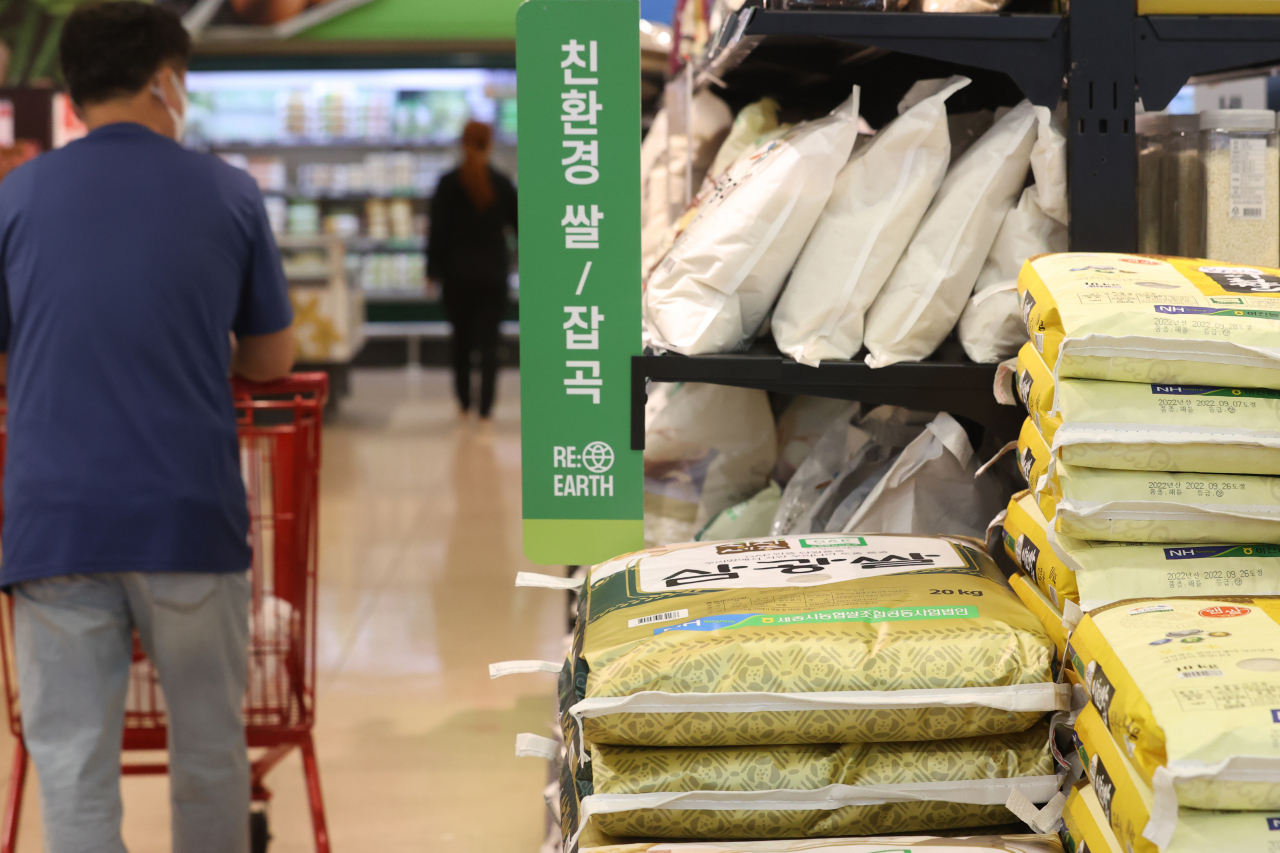 |
A shopper passes by bags of rice at a supermarket in Seoul on Monday. (Yonhap) |
South Korea's consumer prices grew at a slower pace on-year for the second consecutive month in September on the back of slowed growth in prices of oil and agricultural products, data showed Wednesday, in yet another sign that inflation may have peaked.
Consumer prices, a key gauge of inflation, rose 5.6 percent last month from a year earlier, slowing from a 5.7 percent rise in August, according to the data from Statistics Korea.
In July, consumer prices increased at the fastest pace in almost 24 years at 6.3 percent. Compared with a month earlier, September's consumer prices have gone up 0.3 percent, the data showed.
Consumer prices, meanwhile, continued to rise above 2 percent -- the central bank's inflation target over the medium term -- for the 18th straight month in September.
"The growth (of consumer prices) narrowed due to the slowed increase in the price of oil and agricultural products, such as vegetables and fruits," said Eo Woon-sun, a senior Statistics Korea official.
Eo, however, said South Korea needs to closely monitor the impact of a possible cutback of the supply by the Organization of the Petroleum Exporting Countries (OPEC) Plus on the global oil prices.
The official, meanwhile, noted a possibility of the inflation reaching its peak.
Prices of Dubai crude, South Korea's benchmark, stood at $90.95 per barrel on average in September, down 5.68 percent from the previous month, according to the Korea National Oil Corp. The oil prices were still up 18.32 percent from a year ago.
By sector, prices of petroleum products jumped 16.6 percent on-year in September. However, they were down 2.7 percent from a month earlier. South Korea depends heavily on imports for its energy needs.
Prices of agricultural, livestock and fisheries goods went up 6.2 percent on-year. In August, the prices climbed 7 percent on-year.
Vegetable prices soared 22.1 percent on-year in September, although they slowed from a 27.9 percent spike in August.
Prices of personal services increased 6.4 percent, driven by a recovery in demand and the lifting of major virus curbs. It was the largest leap since 6.6 percent posted in April 1998.
The cost of dining out expanded 9 percent on-year in September, according to the data.
Core inflation, which excludes volatile food and oil prices, rose 4.1 percent on-year last month, although it remained unchanged from August.
Prices of daily necessities -- 144 items closely related to people's daily lives, such as food, clothing and housing -- jumped 6.5 percent on-year in September.
In August, South Korea's central bank revised its inflation outlook for 2022 from the previous 4.6 percent to 5.2 percent, which is the highest projection since it introduced the inflation target system in 1998. (Yonhap)







